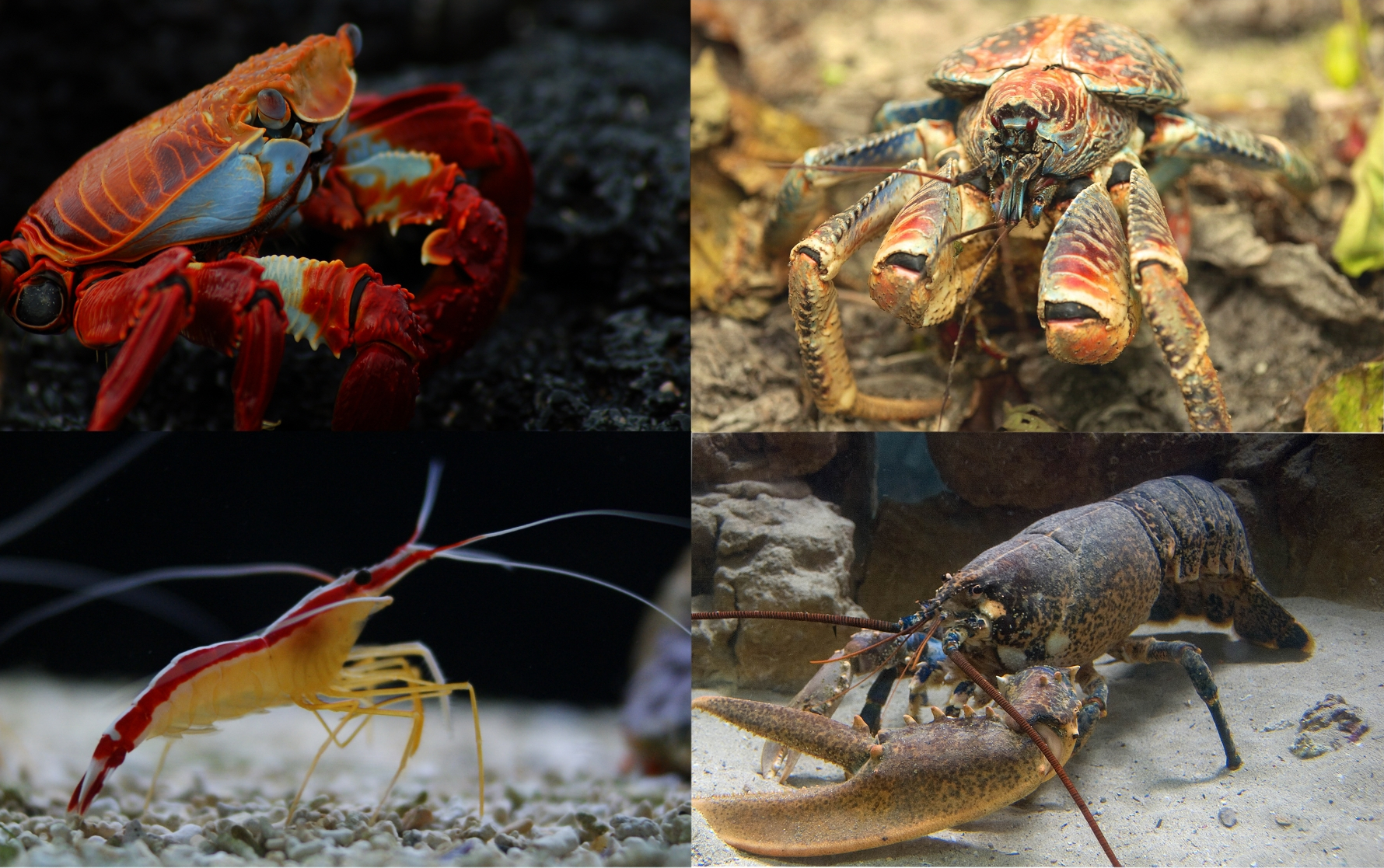A crustacean is a fascinating creature that belongs to a diverse group of animals. While crabs are the most famous members, there are many other intriguing beings in this category, such as lobsters, shrimps, barnacles, and woodlice.
In this text, you’ll discover the distinguishing features that make a creature a crustacean, and you’ll have the chance to encounter various types of crustaceans. Prepare to delve into the captivating world of these remarkable invertebrates!
What Is A Crustacean?
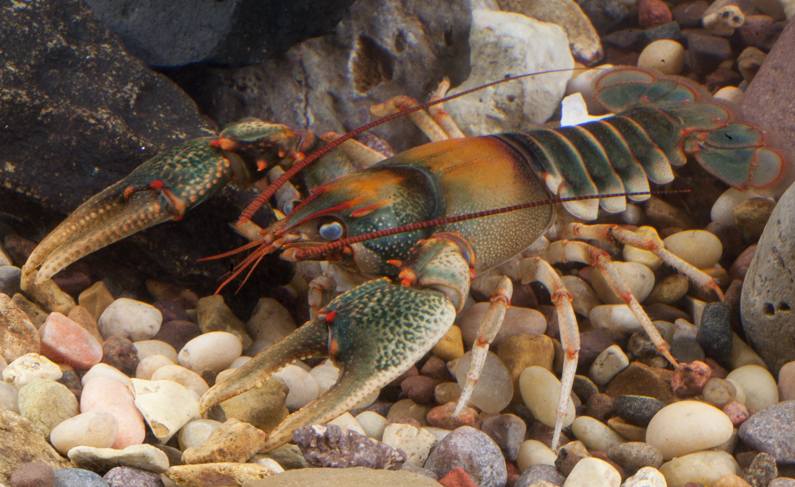
A crustacean is a type of animal that lacks a backbone and possesses a tough outer covering, a segmented body, and legs with joints.
While most crustaceans live entirely in water, some, like certain crabs, have adapted to both aquatic and land environments, while others, such as woodlice, thrive solely on land.
The world is home to approximately 80,000 known species of crustaceans, which include well-known creatures like crabs, lobsters, and shrimps. Additionally, this group encompasses various other related animals like krill and barnacles.
Crustaceans are part of a larger category of animals known as arthropods, which also includes insects, arachnids, and other related species.
There are two key characteristics that distinguish crustaceans from other arthropods: they possess two pairs of antennae and their legs are biramous, meaning they split into two branches.
Crustaceans classified as decapods, such as crabs, crayfish, lobsters, prawns, and shrimps, typically have five pairs of legs. On the other hand, woodlice have seven pairs of legs.
Among crustaceans, you can find both the largest known living arthropod, the Japanese spider crab, as well as the smallest ones like tiny parasitic organisms such as Stygotantulus stocki.

Carcinologists are the dedicated individuals who delve into the exploration of crustaceans, while the realm of studying these fascinating creatures is aptly referred to as carcinology.
Crustaceans Are Arthropods
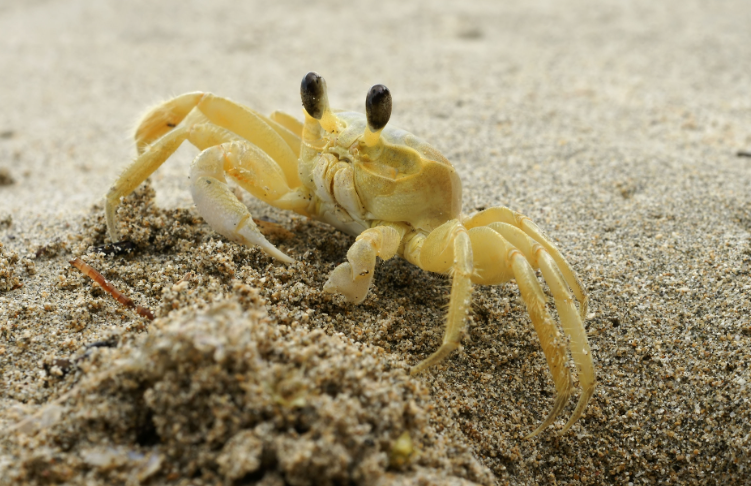
A crustacean is a type of animal without a backbone that belongs to the subphylum Crustacea. Crustacea is a division within the phylum Arthropoda, which encompasses a vast group of invertebrate animals collectively known as arthropods.
Arthropods, including insects, arachnids, and crustaceans, share common characteristics such as external skeletons, jointed limbs, and bodies divided into segments. By tracing back the family lineage of all existing arthropods, one can discover a common ancestor they all descended from.
This ancient arthropod is believed to have been a carnivorous marine creature featuring an external skeleton and a segmented body, with each segment equipped with a pair of limbs. It likely thrived approximately 540 million years ago.
Animals Related To Crustaceans
As arthropods evolved, they diverged into various distinct categories.
Within the Arthropoda, two primary categories emerge. Arthropods equipped with mouthparts called mandibles belong to the group Mandibulata, while those with mouthparts known as chelicerae form the group Chelicerata.
Mandibles serve the purpose of manipulating, biting, and chewing food and other objects. Crustaceans possess mandibles and are classified within Mandibulata.
Additional arthropods with mandibles include myriapods (such as millipedes, centipedes, and related creatures) as well as hexapods (which consist of insects and other six-legged arthropods).
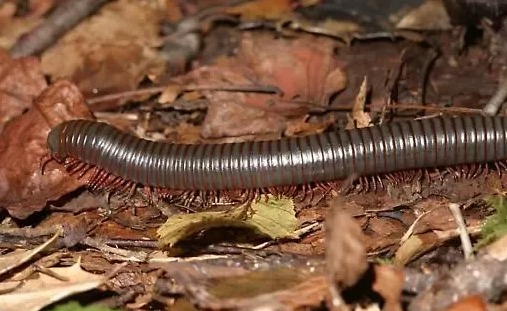
Creatures belonging to the group of arthropods that possess chelicerae consist of arachnids (such as spiders, scorpions, and their kin), sea spiders, and horseshoe crabs.
Pancrustacea
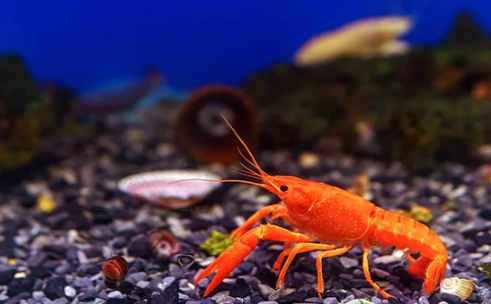
Pancrustacea is a collective term encompassing both crustaceans and hexapods, highlighting their close relationship. Among these, hexapods, which include insects, share the closest kinship with crustaceans. Surprisingly, certain crustaceans are even more closely related to hexapods than to their fellow crustaceans.
While insects and other hexapods have successfully adapted to land environments, crustaceans reign supreme as the dominant arthropods in the world’s oceans and freshwater habitats.
According to some biologists, there is a belief that insects diverged from crustaceans, leading them to be regarded as “terrestrial crustaceans” due to their evolutionary connection.
When Did Crustaceans Appear?
Crustaceans are a group of creatures that have been around for a very long time, originating around 511 million years ago during the Cambrian Period. The fascinating world of these ancient animals saw the emergence of crabs during the Jurassic Period and lobsters during the early Cretaceous Period.
Characteristics of Crustaceans

Segmented Body
Similar to bugs, crustaceans have their bodies segmented into three primary sections: the head, thorax, and abdomen. In certain crustaceans, the head and thorax unite to create a fused structure called a cephalothorax, which is commonly shielded by a protective covering known as a carapace or shell.
Exoskeleton
Every member of the crustacean family possesses an outer skeleton called an exoskeleton. As part of their growth process, these creatures shed their exoskeleton periodically, making room for their bodies to expand and develop.
Jointed Legs
Similar to other creatures in the arthropod family, crustaceans possess legs with joints, organized in pairs. The term “arthropod” itself signifies a “jointed foot,” encapsulating the characteristic feature of this diverse group of organisms
Four Antennae
Crustaceans stand apart from other arthropods by sporting a distinct feature: two sets of antennae. These remarkable appendages play a crucial role in gathering vital information about the crustacean’s environment.
However, it’s worth noting that in certain crustaceans, the antennae may be diminished in size and might not be easily observable to the naked eye.
Biramous Limbs
A fascinating characteristic of crustaceans is the presence of biramous limbs. Unlike other arthropods, these creatures possess limbs that divide into two branches, adding to their distinctive nature.
Compound Eyes
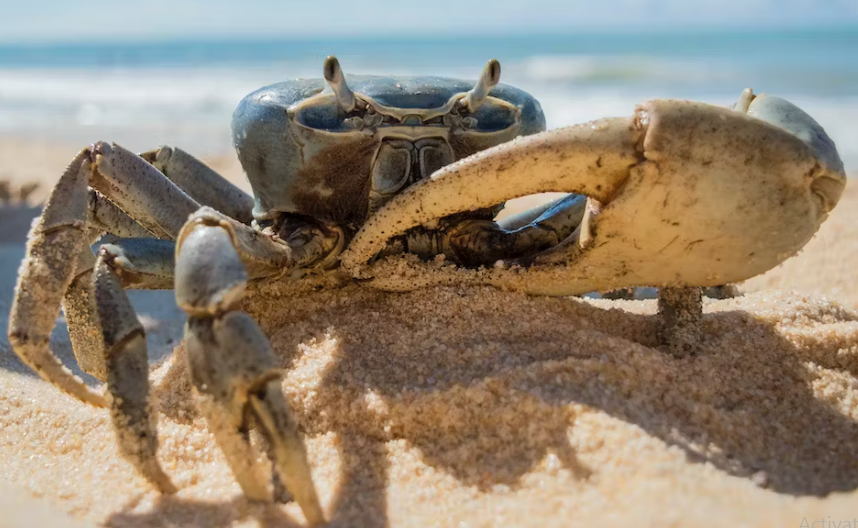
The majority of crustaceans possess a set of compound eyes, usually positioned on stalks. Within each compound eye, there can be thousands of tiny lenses. Additionally, certain crustaceans have simple eyes that consist of a single lens. (Source)
Live In Aquatic Environments
The majority of crustaceans thrive in aquatic environments, spending their entire existence in either saltwater or freshwater. While a few types of crabs may venture onto land occasionally or for extended periods, fully terrestrial species are quite rare.
Woodlice, however, are unique crustaceans that have adapted to living on land. Although they belong to the crustacean family, they rely on moist habitats to avoid dehydration and maintain their well-being.
Crustacean Life Cycle
Crustaceans begin their life journey by hatching from eggs, and many of them undergo a fascinating transformation known as metamorphosis to reach their adult state. Along this transformative process, they often progress through multiple larval stages. After each stage, they experience a molt, during which their exoskeleton is shed and replaced, paving the way for their growth and development.
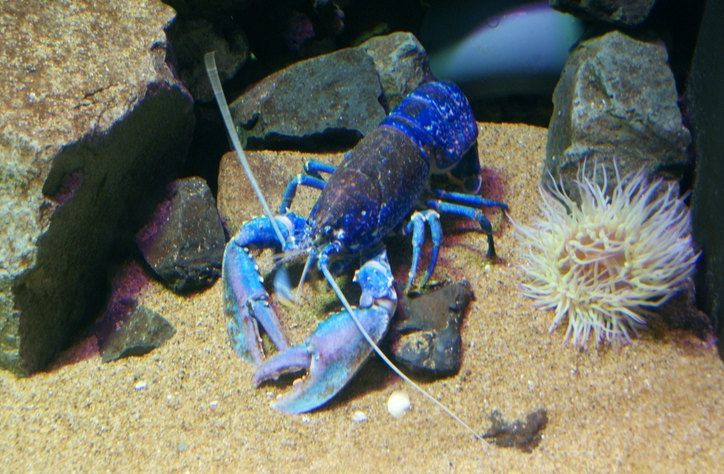
The young offspring of various crustaceans are carried by the ocean tides, joining forces with other tiny organisms to create plankton. This serves as a vital source of nourishment for numerous marine creatures.
Even after going through their initial larval stage, many crustaceans experience a subsequent phase known as the post-larval stage, where they take on a miniature resemblance of their adult form.
Take crabs, for instance. They undergo multiple molting cycles during the post-larval or juvenile stage. During this period, they appear like small adults, albeit often retaining their tails.
Certain crustaceans, particularly isopods like woodlice, bypass the larval stage entirely and hatch directly into the post-larval stage.
The larvae of crustaceans typically exhibit stark differences in appearance compared to their ultimate adult form. This poses a significant challenge for biologists in identifying crustacean larvae, and some larvae remain unknown or disconnected from their eventual adult counterparts.
Egg Care
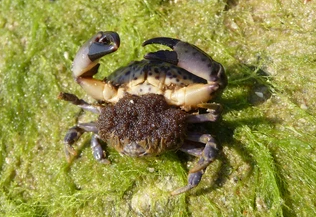
While certain crustaceans opt to release their fertilized eggs directly into the aquatic environment, others choose to bear the eggs until they reach the hatching stage. These eggs can be stored within a specialized brood chamber inside their bodies or externally attached to the pleopods, also known as the “swimming legs” or swimmerets, or the underside of the abdomen.
Female crabs employ a sticky substance to attach their eggs to their abdomens, while lobsters and various other crustacean species attach their eggs to their pleopods.
Crustacean Migrations
Certain crustaceans undertake yearly journeys with the purpose of reproduction. Take, for instance, land-dwelling crabs like the Christmas Island red crab, which traverse from the land to the ocean. On the other hand, certain spiny lobster and giant spider crab species are renowned for their migrations along the seabed.
Types of Crustaceans
Crustacea encompasses six distinct categories or groups.
Malacostraca

Malacostraca stands as the most extensive group within the realm of crustaceans, encompassing approximately 40,000 distinct species. Within this diverse class, one encounters renowned members like crabs, lobsters, crayfish, shrimp, woodlice, and krill.
Decapoda
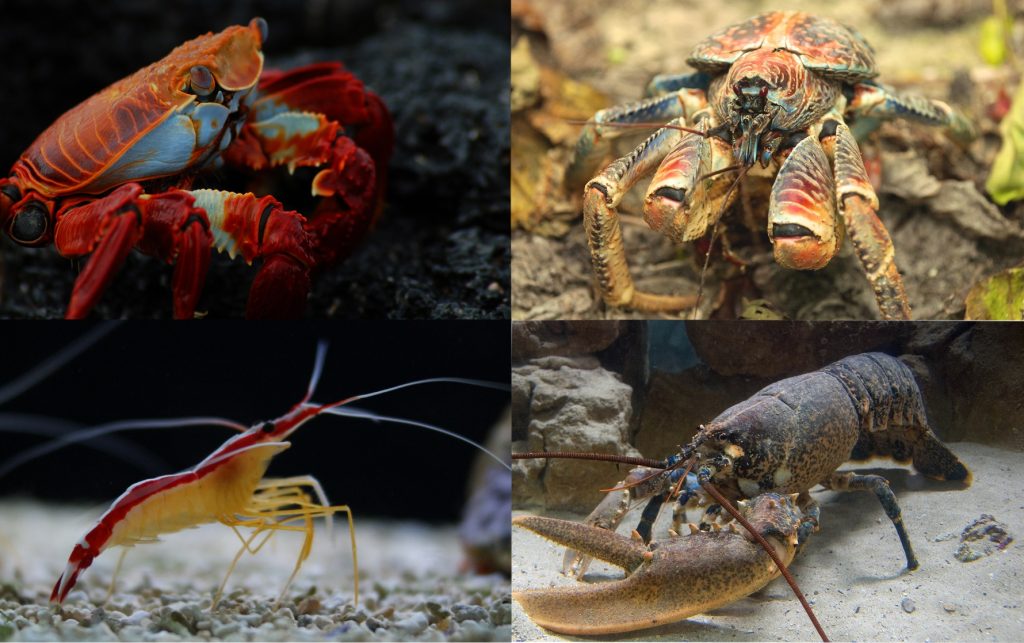
Many of these well-known shellfish belong to the Decapoda order, which is comprised of decapods.
Decapoda includes creatures like crabs, crayfish, lobsters, prawns, and shrimp. The term “Decapoda” translates to “ten feet,” referring to the ten legs possessed by these decapods. In many decapods such as crabs and lobsters, the front pair of legs is often modified into pincers known as chelipeds.
The bodies of most malacostracans, a group that includes crustaceans, consist of 20 segments divided among the main head, thorax, and abdomen sections.
Sometimes, the head and thorax fuse together to form a single unit called a cephalothorax. The crustacean’s compound eyes are typically located on the head and are often supported by stalks.
Many malacostracans have shells called carapaces that cover some or most of their bodies. Unlike many other crustaceans, malacostracans possess appendages on their abdomens.
Crustaceans belonging to the Malacostraca order have multiple pairs of appendages attached to each section of their bodies.
The first set of appendages consists of two pairs of antennae, which provide sensory information.
Next are the mandibles, which are used for cutting and chewing food.
Following the mandibles, there are several pairs of food-handling appendages called maxillae. One pair of maxillae possesses gills and a flat structure used for fanning water over the gills.
After the maxillae, there are the maxillipeds, which also serve sensory functions. One pair of maxillipeds also bears gills.
The crustaceans’ “legs” are known as pereiopods. The first pair of pereiopods is larger than the others and forms the crustacean’s claws. These claws are used for defense and capturing food.
Attached to the abdomen are the pleopods, or swimmerets, which aid in propulsion during swimming and may also possess gills. Female malacostracans attach their eggs to these appendages.
Branchiopoda
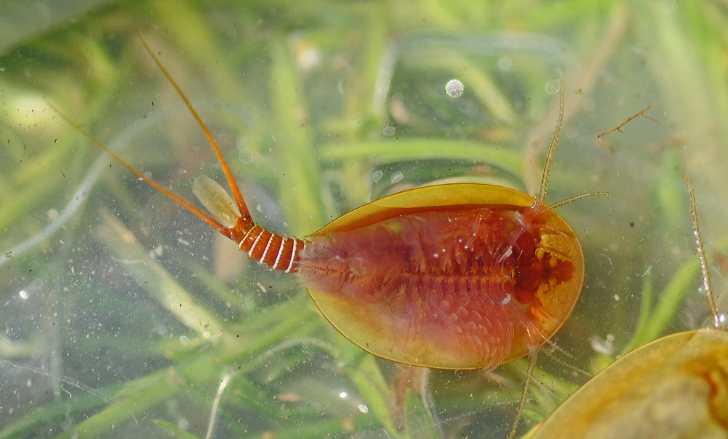
Branchiopoda is a fascinating group of crustaceans, encompassing various species such as tadpole shrimps, water fleas, clam shrimps, and fairy shrimps. These tiny creatures inhabit freshwater environments across the globe, creating a diverse presence in aquatic habitats worldwide.
Remipedia
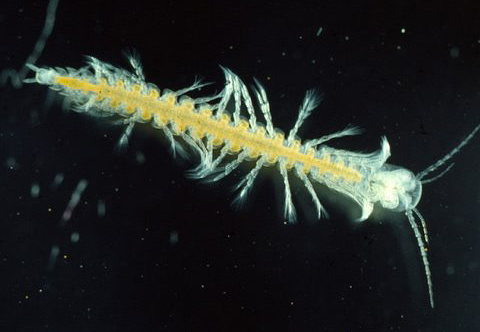
Remipedia, a fascinating group of crustaceans, comprises 29 distinct species. These remarkable creatures reside in caves, devoid of sight, and are primarily discovered in various subtropical regions such as the Caribbean, Indian Ocean, and the Canary Islands. Measuring approximately one inch in length, their bodies are composed of roughly 30 segments, each adorned with a set of dual-branched limbs. What sets Remipedes apart is their unique distinction as the sole venomous crustaceans currently known to science.
Cephalocarida
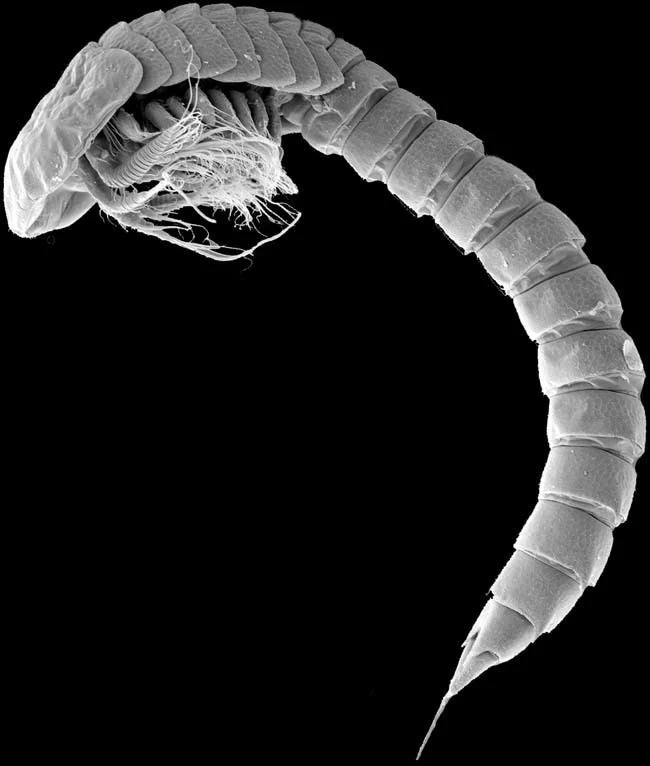
Cephalocarida, these tiny crustaceans, dwell in the depths of the ocean floor, concealed within the sediment. Measuring approximately 3mm in size, they exist without sight. These fascinating creatures are often referred to as horseshoe shrimps.
